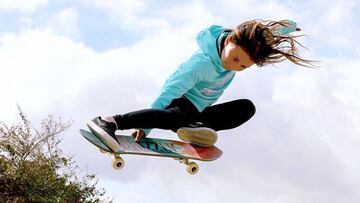Tokyo Olympics 2021 skate: rules, score system and format
Breakdown of the Skateboarding competition format and the judging regulations and scoring of the events now present in the Olympic Games program.


The sport of skateboarding will make its Olympic debut at the Tokyo 2020 Games. A skateboard consists of a deck with four wheels attached by trucks. There are no limitations on the shape, materials, or size of the skateboard or its parts. The skateboard cannot be connected to a skater's feet by any physical means. Skateboarders ride on this apparatus to perform tricks, including jumps (ollies), flips, and mid-air spins. In skateboarding, the rider is free to select which parts of the course to tackle and which tricks to perform. Even when the same tricks are completed, the flow of the performance can depend significantly on the speed attained. While speed is an essential element, marks are awarded for the overall level of difficulty and originality.
Olympic Games news:
- Athletes to put on their own medals at Tokyo Olympics
- Rio 2016: who topped the medal table?
- Tokyo Olympics 2021: competition schedule: dates, events, sports, times
The athletes will contest in the Skateboarding program in the street and park event at Tokyo 2020. Both events will have men's and women's part of the competition.
Street
This competition is held on a straight 'street-like course featuring stairs, handrails, curbs, benches, walls, and slopes. Each skateboarder performs individually and uses each section to demonstrate a range of skills or tricks. Judging considers factors such as the degree of difficulty of the tricks, height, speed, originality, execution, and the composition of moves to award an overall mark.
The Street competition comprises three rounds: Qualifiers, Prelims/Semi-Finals, and Finals. In the qualifiers, skaters will compete in heats of up to 7 skaters, in a best of two 60 seconds runs contest format. The five judges will use a 0-100.00 points scale. The highest and lowest scores for each run or jam session are dropped, and the remaining three scores are averaged to two decimal places.
In the Prelims/Semi-Finals and Final rounds, the 20 skaters will compete in 4 heats of 5 skaters. The first eight skaters from the combined ranking of the heats will progress to the finals. In each round, the skaters will perform two 45 second runs and five individually scored tricks.
Both runs, and each of the five tricks, are judged by five judges who will use a 0-10.0 points scale. The highest and lowest judges' scores for each run or trick are dropped, and the remaining three scores are averaged to give a score for each run and each trick (seven scores).
The best four scores from runs or tricks will be added to give the total round score.
Park
Park competitions take place on a hollowed-out course featuring a series of complicated curves — some resembling large dishes and dome-shaped bowls. From the cavity bottom, the curved surfaces rise steeply, with the upper part of the incline either vertical or almost vertical. Among the park's attractions of the competition are the immense heights achieved by climbing the curves at speed and performing amazing mid-air tricks.
The variety of tricks available to skateboarders increases with the height gained launching out of the park's curves. The degree of difficulty can depend on whether the deck of the skateboard is grabbed with a hand when performing mid-air tricks, which part of the deck is held, which hand is used to grab the deck, and the rider's posture while grabbing the deck.
Difficulty and originality also increase if the deck is rotated in mid-air, flipped, or the competitor can rotate their body while in mid-air. Other tricks include variations of balancing (stalls), grinds, and slide tricks on the 'lip' of the ramp.
Related stories
The Park competition consists of three rounds: Qualifiers, Prelims/Semi-Finals, and Finals. In the qualifiers, skaters will first compete in heats of up to 6 skaters. The first 20 skaters from the combined ranking of the heats will progress to the prelims.
In the prelims, the 20 skaters will compete in four heats of five skaters. The first eight skaters from the combined ranking of the heats will progress to the finals. In each round, the skaters will compete for the best of three or four runs ranging from 40 to 60 seconds depending skate-park size or layout.

